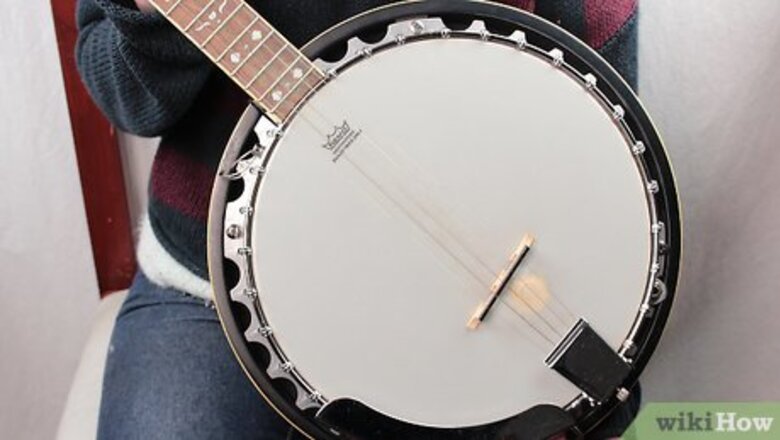
views
Standard Cradle Strap
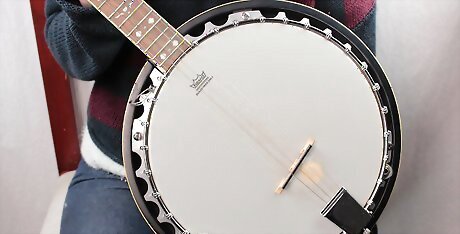
Check the banjo. If you want to use this method, you'll need to make sure that there is enough space in between the head tension bracket hooks to thread the strap completely through. You can use this method for most bluegrass banjos, especially those with a one-piece flange, but open back banjos and beginner banjos may not have enough space and will require a different technique.
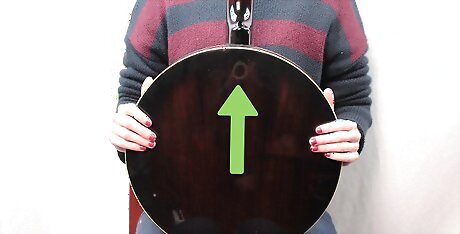
Hold the banjo upright. Position the banjo in your lap so that the neck faces straight up and the strings face toward you. The neck of the banjo should represent the "12 o'clock" position of the instrument.
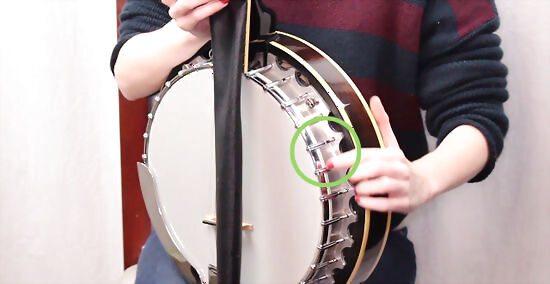
Thread the strap beneath the neck. Look at the hooks along the side of the banjo. Thread one end of your strap through the hook lying at the "2 o'clock" position of your banjo, then through the next three hooks along the side of the banjo, moving away from the neck. The starting point will usually be two or three hooks down from the neck. When the strings face you, move to the right of the neck. When the strings face away from you, move to the left of the neck. The threading motion will be similar to the process of sliding a belt beneath belt loops on a pair of pants. For most cradle straps, the ends are thinner than the primary body of the strap. Only slide the thin end beneath the hooks; do not use any of the thick strap.

Thread the other end under the tailpiece. Position the other thin end of the strap beneath the hook at the "4 o'clock" position of your banjo. Slide it along the side channel, beneath all of the other hooks, until the two strap ends meet. The initial hook will usually be the second or third hook to the right of the tailpiece (with the banjo strings facing you). Alternatively, some prefer to thread the other end beneath the hook at the "9 o'clock" position. This spot will lie at the left side of the banjo when the strings face you. If you prefer the way the strap feels when in this position, you must still thread it beneath the other hooks along the side channel, moving away from the neck, until you meet the first end.
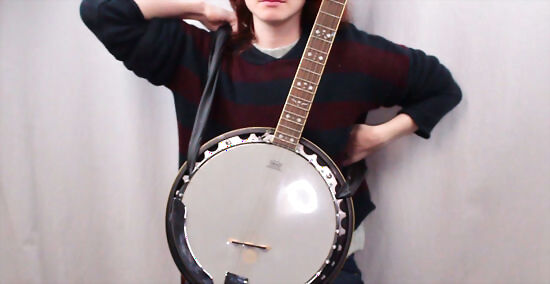
Adjust as needed. Place the banjo strap over your neck and check the fit. Pull more strap through the side channel hooks if you need to tighten it. Ideally, the banjo strap alone should be able to hold the banjo in the playing position even when you don't have your hands on the banjo.
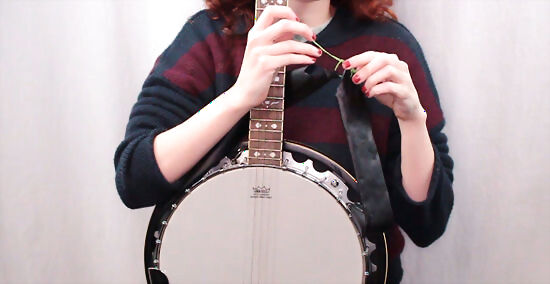
Tie the ends together. Locate the eyelet holes in both strap ends. Thread the black laces of the cradle strap through the eyelet holes of both ends, then tie the black laces together to keep the strap secure. If your cradle strap did not come with black laces, you should be able to use standard black shoelaces, thin paracord, or thick and durable string to lace and tie the strap in place. This completes the process. You should now be able to wear the banjo strap and play the instrument.
Altered Cradle Strap
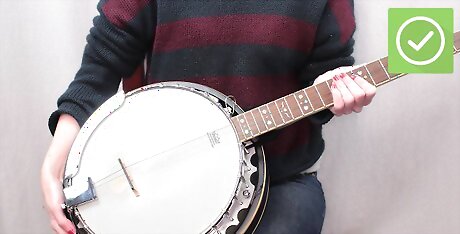
Check the banjo. This method is your best option when there is very little space in between the head tension bracket hooks on your banjo. If you cannot fit the cradle strap through these hooks, you will need to use this option to attach the strap. Most beginner and open back banjos require the use of this technique. Other professional bluegrass banjos can typically use the standard cradle strap technique.
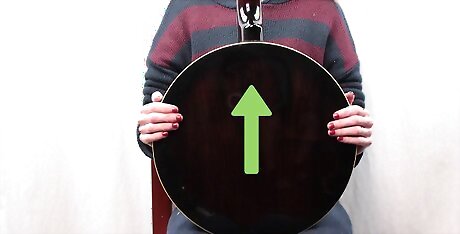
Hold the banjo upright. Stand the banjo in your lap or on a working surface. The neck should stand straight up, in the "12 o'clock" position of the banjo. The strings of the instrument should face you. Note that you can alter this position to something more natural or comfortable once you familiarize yourself with the correct placement of the strap. While learning, though, it helps to hold the banjo like this.
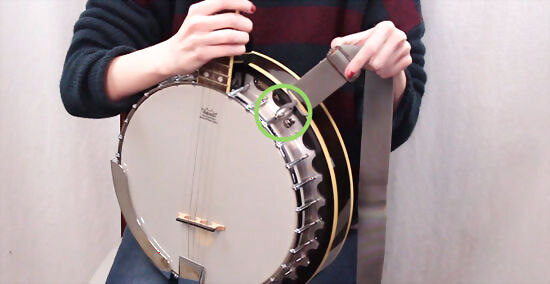
Attach one end of the strap beside the neck. Tie one end of the strap onto the second or third hook next to the neck of the banjo. With the banjo strings facing you, count two to three hooks to the right of the neck. Consider investing in a strap with leather tabs attached to either end. You may also find straps that have metal or plastic hooks on either end, but use these carefully, since the strap hooks can damage the wood of the banjo. Snap or hook the end of the strap over the appropriate hook of the banjo. If you do not have a modified strap, you can tie the end of the strap around the hook of the banjo using sturdy laces, paracord, or string.

Attach the other end of the strap near the tailpiece. Tie the other end of the strap to the second or third hook away from the tailpiece. With the strings facing you, count to to three hooks to the right of the tailpiece. Note that both ends of the strap should be on the same side of the banjo when you divide the banjo in half vertically. Snap, hook, or tie this end of the strap to the appropriate hook of the banjo, using the same method of attachment used for the first end of the strap.
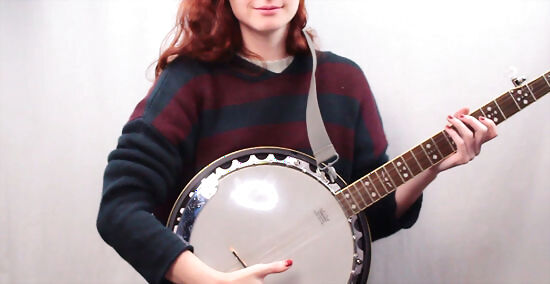
Adjust as needed. Place the banjo strap over your shoulder and behind your neck. If the strap is adjustable, adjust it to fit so that the banjo hangs in its natural playing position without being held. Completing this step should complete the process, and your banjo should now be ready to play.
















Comments
0 comment